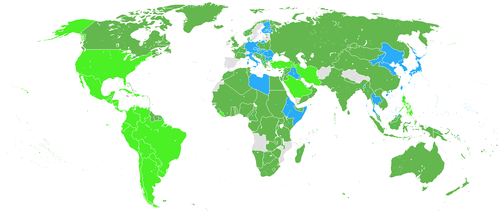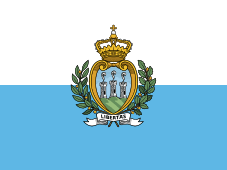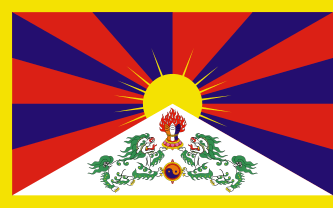Neutral powers during World War II

The neutral powers were countries that remained neutral during World War II. Some of these countries had large colonies abroad or had great economic power. Spain had just been through its civil war, which ended on 1 April 1939 (five months prior to the Invasion of Poland)—a war that involved several countries that subsequently participated in World War II.
During World War II, the neutral powers took no official side, hoping to avoid attack. However, Portugal, Sweden, Colombia, and Switzerland all helped the Allied Powers by supplying "voluntary" brigades to the United Kingdom, while Spain avoided the Allies in favor of the Axis. Ireland generally favoured the Allied side, as with the United States. The United States remained neutral until December 8, 1941, a day following the sneak attack by Japan on Pearl Harbor.
The Lateran Treaty between Italy and the Vatican, signed in 1929, required that the Pope maintain "perpetual neutrality in international relations"—making the Vatican City a neutral state.
Several countries suffered invasions in spite of their efforts to be neutral. These included Nazi Germany's invasion of Denmark and Norway on 9 April 1940—then Belgium, the Netherlands, and Luxembourg on 10 May 1940. On the same day, 10 May 1940, the British invaded Iceland and established an occupying force (subsequently replaced by the then-neutral United States). In the eastern Baltic, the Soviet Union invaded Lithuania on 15 June 1940 and Latvia and Estonia on 17 June. In the Balkans, the Italo-Greek War began on 28 October 1940 and Yugoslavia was invaded in April 1941. Iran was also attacked and occupied by Britain and the Soviet Union in August 1941.
See also the histories of Afghanistan, Andorra, Guatemala, Liechtenstein, Saudi Arabia and Yemen during this period.
Continent
Europe
Ireland

Portugal

Colonies of Portugal:








Spain
.svg.png)
Sweden

Switzerland

Lithuania

Latvia

Estonia

Microstates
Andorra
Liechtenstein
Monaco

San Marino

Vatican City
Asia
Afghanistan
.svg.png)
Iran

Saudi Arabia
.svg.png)
Tibet

Turkey

Yemen

Conclusion
Portugal, Spain, Sweden and Switzerland held to the concept of armed neutrality, and continuously amassed soldiers to defend their nation's sovereignty from potential invasion. Thus, they maintained the right to become belligerent if attacked while in a state of neutrality. The concept of neutrality in war is narrowly defined and puts specific constraints on the neutral party in return for the internationally recognized right to remain neutral. A wider concept is that of non-belligerence. The basic international law covering neutral territories is the Second Hague Convention. It is important to note that a neutral country takes no side in a war between other parties, and in return hopes to avoid being attacked by either of them. A neutralist policy aims at neutrality in case of an armed conflict that could involve the party in question. A neutralist is an advocate of neutrality in international affairs. The concept of neutrality in conflicts is distinct from non-alignment, i.e., the willful desistance from military alliances in order to preserve neutrality in case of war, and perhaps with the hope of preventing a war altogether.
In a study of Spain, Switzerland and Sweden during WWII, Eric Golson found that they engaged in economic realpolitik, as they traded with both the Axis and the Allied Powers.[5]
See also
References
- ↑ Liekis, Šarūnas (2010). 1939: The Year that Changed Everything in Lithuania's History. New York: Rodopi. pp. 119–122. ISBN 9042027622.
- ↑ Neiburgs, Uldis. "Soviet occupation". Latvijas Okupācijas muzejs. Retrieved 17 December 2017.
- ↑ Estonian Neutrality Law of December lst, 1938
- ↑ Jan Romein (1962). The Asian Century: A History of Modern Nationalism in Asia. University of California Press. p. 382.
- ↑ Golson, Eric (2016). Economic History of Warfare and State Formation. Studies in Economic History. Springer, Singapore. pp. 259–278. doi:10.1007/978-981-10-1605-9_11. ISBN 9789811016042.
- Karsh, E. "Neutrality and Small States." 1989.
- Gabriel, J. M. "The American Conception of Neutrality After 1941." 1989.
- http://www.encyclopedia.com/doc/1E1-neutral.html
External links